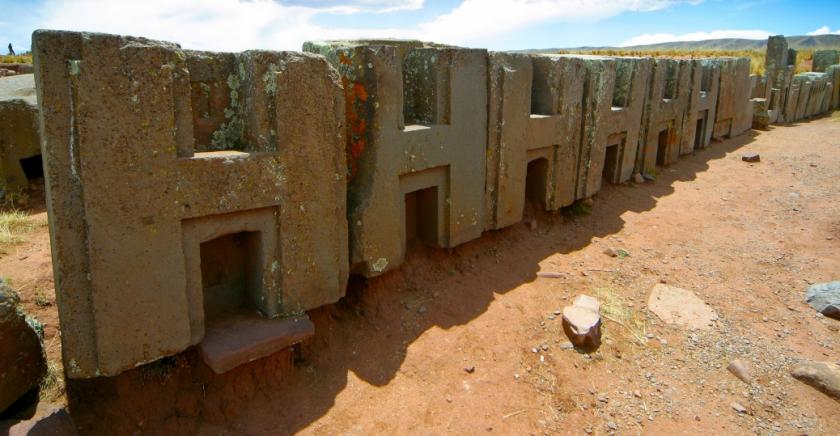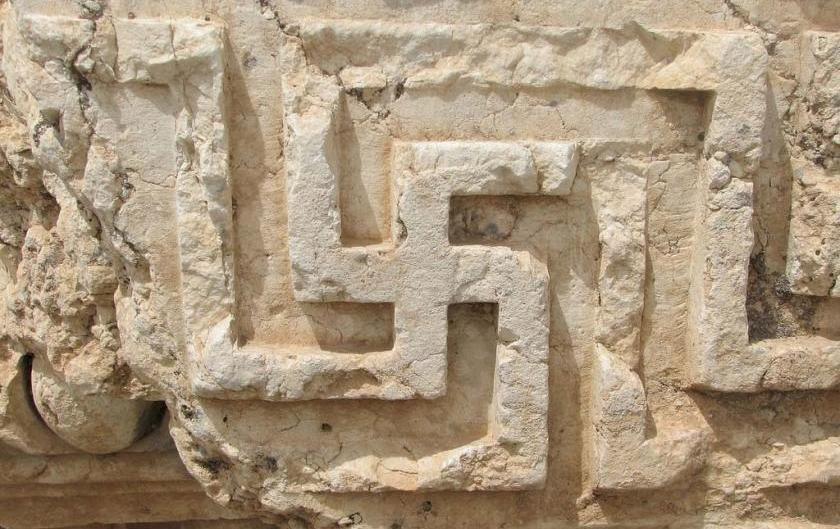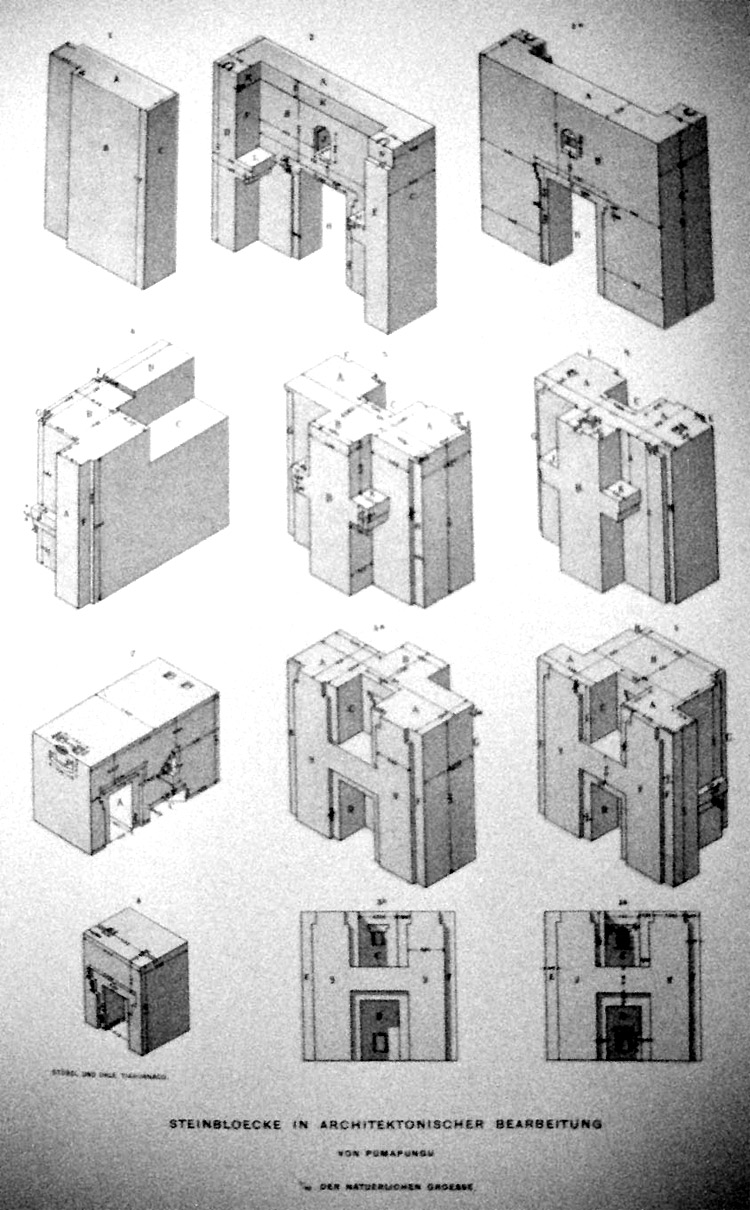Who built Puma Punku remains a mystery till date. They have the age old vedic symbol of Swastika on few blocks.
Puma Punku is a complex of ruins, part of a large temple group that is part of the Tiwanaku site near Tiwanaku, Bolivia ca 4000 m above sea level. Puma Punku is now understood to be at least 12,000 – 17,000 years old, essentially, right out of the Stone Age.
Puma Punku is a terraced earthen mound that is faced with megalithic blocks. It is 167.36 m wide along its north-south axis and 116.7 m long along its east-west axis.

Most surprising is the Swastika symbol on few H-Blocks and other stone carvings at Puma Punku.

Puma Punku is believed to have once contained a great wharf, and a massive four part structure.
Yet all that remains today are megalithic ruins from some cataclysmic event in history.
A great earthquake ? A comet that came too close to the Earth? A worldwide flood ?
These are all possible causes to the destruction of the once great structure that is now the ruins of Puma Punku.
There is an evidence of a cataclysmic flood, and also and evidence that people once lived there before such a flood even occurred. The suspected flood could have happened somewhere around 12,000 years ago, and there is scientific evidence of tools, bones, and other material within flood alluvia, which suggests that a civilized people were there prior to any flood.
Other evidence, that being carvings of bearded people that are not Andean, have been recorded throughout the area.
Many of the blocks weighed 200 tons, with one even weighing in at 450 tons! How were these blocks brought to a plateau 13,000 feet high? One of the construction blocks from which the pier was fashioned weighs an estimated 440 tons (equal to nearly 600 full-size cars) and several other blocks laying about are between 100 and 150 tons. The quarry for these giant blocks was on the western shore of Titicaca, some ten miles away. There is no known technology in all the ancient world that could have transported stones of such massive weight and size. The method by which they were transported to Puma punku is unknown.
The stones in Puma Punku are made up of granite, andesite and diorite. The only stone that is harder that those two, is the diamond. The precision-made 6 mm wide groove contains equidistant, drilled holes. It seems impossible that this cuts were made with use of stone or copper tools. It’s like that shows that these stone blocks have been fabricated with a very advanced technology.

These and other red sandstone blocks were transported up a steep incline from a quarry near Lake Titicaca roughly 10 km away. Smaller andesite blocks that were used for stone facing and carvings came from quarries within the Copacabana Peninsula about 90 km away from and across Lake Titicaca from the Pumapunka and the rest of the Tiwanaku Site.
One of these stone ruins weighs in at about 800 tons! These are big stones, and they are really heavy. The nearest quarry is at least 10 miles away from the site of the ruins. How in the world did these people move these blocks that weighed many tons, and how were they able to form a structure with them?

Tiahuanaco may be (along with Teotihuacan in Mexico, Baalbek in Lebanon, the Great Pyramid in Egypt and the Osirion Temple in Abydos) a surviving fragment of a long lost civilization. Who were the people of this lost civilization who built Puma Punku, without any writing system as far as we know? The ancient builders left no written records.
Only possible recorded history of South America in Indian puranas is the of King Bali travelling to South America (Paatala Loka) and establishing his new kingdom there.
